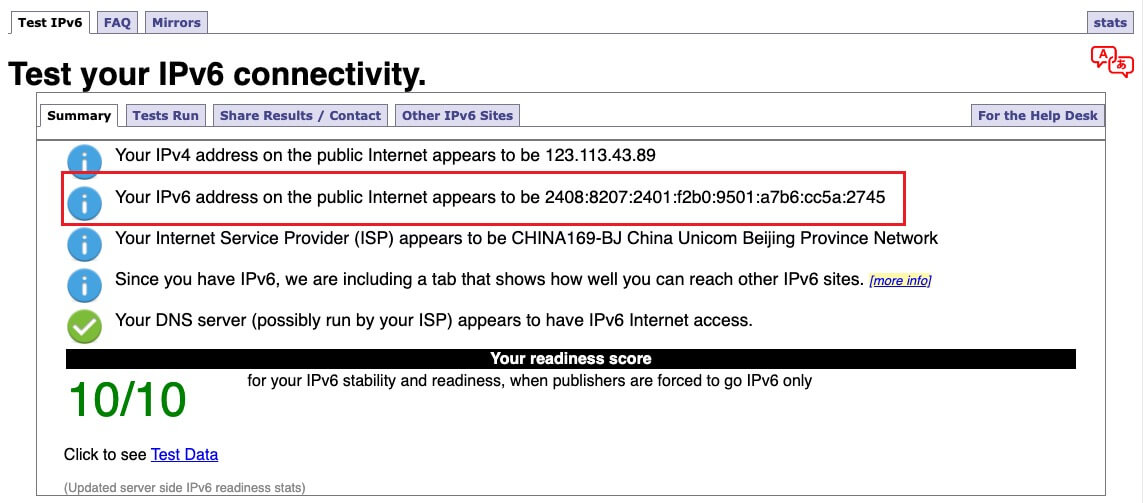I saw posts saying IPv6 livestreams are more stable, so I upgraded my home network. Here’s the process.
Hardware
Hardware involved:
- China Unicom ONT
- ZTE router
- Clients (Mac, Apple TV, iPhone, etc.)
Bridge the ONT
Record your PPPoE username/password first—you’ll need them later.
Report a “broadband issue” via the China Unicom app; the technician will call and switch the ONT to bridge mode remotely. If devices still connect afterward, bridging failed—ask them to retry or visit in person.
Forgot the credentials? Call 010-112, then press 0 for a human agent.
Router PPPoE Setup
Configure PPPoE on the router with the same credentials, ensuring IPv4 works first.

Enable IPv6 on the Router
On my ZTE router I had to enable IPv6 in two places:
- System → IPv6 (toggle on)
- WAN → IPv6 (toggle on)
Then reboot the router.

Test IPv6
Connect a device and visit https://test-ipv6.com/
If it reports an IPv6 address, you’re set.

On macOS/iOS, check network details for an IPv6 address.

Note: If you proxy through Surge, enable ipv6-vif; otherwise test-ipv6.com fails.
Putting IPv6 to Use
Livestream sources labeled “IPv6” now play smoothly on Apple TV (iPlayTV). IPv6-only URLs work as well, e.g.:
http://[2409:8087:1a01:df::7005]/ottrrs.hl.chinamobile.com/PLTV/88888888/224/3221226450/index.m3u8
Closing Thoughts
Dual-stack devices keep IPv4, so enabling IPv6 has no downside—worth doing if your ISP supports it.

